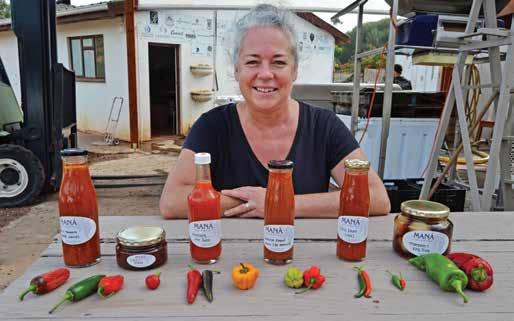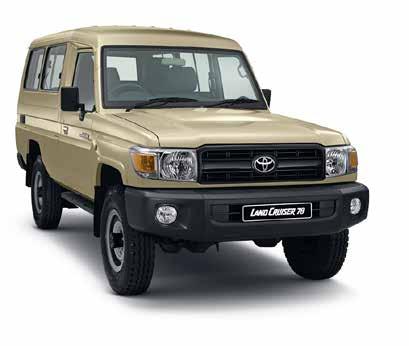18
www.thevillagenews.co.za
10 March 2021
MY ENVIRONMENT
Have you seen a fig flower? By Dr Anina Lee
O
f course you have – you’ve seen lots and lots of them. Every time you break open a lovely lush fig you see the flowers inside. A fig is actually the stem of an inflorescence, very enlarged and fleshy, that surrounds the tiny flowers inside. And the crunchy bits under your teeth are the seeds. Fig trees are unique in that their flowers are completely concealed within an enclosed inflorescence, with the hundreds of tiny florets lining the inside of a central cavity. So if the flowers are hidden from view, what pollinator would visit such an un-showy non-flower? How does it get pollinated? Well, this is the really interesting thing about figs. A unique flower requires a unique pollinator. All fig trees are pollinated by very small (female) wasps of the family Agaonidae. These little wasps are just able to squeeze through the tiny hole on the front of the fig. Sometimes the squeeze through the little hole on the front of the fig is so tight that the wasp loses its wings in the process – but no matter, because it will never leave the fig again. The wasps are so specialised that each species of wasp only pollinates a particular species of fig tree. As the song says: “You can’t have one without the other”. This is an example of obligate commensalism, developed over around 60 million years of co-evolution. The whole story is further complicated by the fact that some fig species are monoecious and some are dioecious. Monoecious means that the trees produce figs that have both male and female flowers. Dioecious means that the species has trees that produce figs with only female flowers as well as trees that produce figs with only male flowers.
Monoecious figs So to recap: In monoecious fig trees both the male and female flowers are found in the same fig. How does it prevent self-pollination? The fig has a neat strategy. When the female flowers inside the immature fruit are ready for pollination, the fig emits an enticing aroma that attracts only female wasps of the specific species for that tree. After squeezing inside, the tiny female wasp runs around the interior of the fruit visiting many of its flowers and laying her eggs inside the future seeds. The wasp carries pollen on her body from another fig where she was born. In the egg-laying process the pollen rubs off and fertilises the female flowers, allowing all the seeds to grow – not just the ones where she has deposited eggs, which will naturally prevent these seeds from maturing. The styles of some flowers are so long that the ovary is safely out of reach of the wasp’s ovipositor. This means that the wasp can’t lay her eggs in them and those seeds can reach maturity. Having fulfilled her life's mission to lay eggs, the female wasp dies inside the fig. The eggs hatch into grubs that grow inside the seeds. After completing their full development in a few weeks the little wasps, both male and female, emerge from the seeds. The males hatch first and start looking for females to mate with. They are smaller than the females and don’t even have wings; they don’t need them because they will never fly. After mating they, like their mother, die inside the fig. They never see the light of day. Don’t worry, when you bite into a ripe fig, you are not crunching wasps – they are digested by the fig long before you pick the fruit. When the female wasps emerge from the fig, they have already been fertilised and are ready to find another fig in which to lay their eggs. At this point, the male flowers inside the fig are ripe and loaded with pollen, so when the female wasps leave the fig, they are loaded with pollen to carry to the next fig. This incredible partnership requires very fine tuning and synchronicity on the part of the plant and of the pollinator.
Dioecious figs Dioecious fig species have separate male and female plants. Pollination of these fig species is a bit more complex. In dioecious fig species the male trees produce figs containing flowers that all have a short style length (blue flowers in the diagram). The pollinating female fig wasp can thus reach all the ovules with her ovipositor and hence manages to lay eggs in all the flowers. By the time the grubs in these flowers have metamorphosed into adult wasps, the male flowers have produced copious pollen. The wasps emerging from these flowers get covered in a load of this pollen before they leave the fig they have been bred in, searching for a female fig tree. Female trees produce figs that all have a long style, preventing the pollinator from reaching the ovules with her ovipositor (which is much shorter than the style length). However, the wasp does deposit pollen on the stigmas (which are on the end of the styles) in the process of attempting to lay her eggs. These fertilised flowers will thus set seeds that are consumed by fig-eating animals and are dispersed far and wide. Figs on female trees are really traps for the wasps, as they do not manage to reproduce in the female figs. The wasps do not learn to avoid female figs as these sirens of the forest successfully mimic male figs. Figs are among the most important plants in tropical and subtropical ecosystems, because so many animals depend on them for food. Over 1 274 species of birds and mammals eat figs. In other words, more than 10% of all bird species and 6% of all mammal species eat figs. And that’s just among vertebrates! We don’t even know how many insects use figs for food, but it’s a lot. Figs are so popular because they grow on every continent (except Antarctica) and they are available in all seasons. There are around 850 species in the genus Ficus. An individual tree can even produce crops at different stages of its development, providing a much extended fruit season. So hail the humble fig.
ABOVE: Monoecious Illustrations © Simon van Noort (Iziko Museums of South Africa) BELOW: Dioceious






















